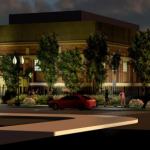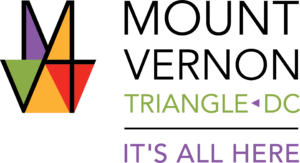MVT CID President & CEO Reflects on Recent IDA Fellowship
Tuesday July 25, 2017

When I mention the Mount Vernon Triangle Community Improvement District (MVT CID), some may quickly associate the phrase with our dedicated seven-person Clean Team Ambassadors who keep the neighborhood clean, safe and welcoming to all who choose to live, work, do business or entertain in our community. Others may be more familiar with the MVT CID’s status as one of
DC’s 10 Business Improvement Districts (BIDs) that collaborate on cross-cutting issues impacting the entire city. This includes business attraction and retention, community building events, homeless outreach, and public space activation and beautification.
But many likely are not familiar with the MVT CID’s standing as one of 3,000 organizations world-wide – including 2,500 in North America – that are part of the broader “place management” industry. There is even a trade organization – the
International Downtown Association, or IDA – that provides tools, strategies and thought leadership for creating livable, healthy and dynamic urban centers worldwide. The MVT CID is especially fortunate to benefit from the experience and expertise of
IDA President & CEO David Downey as a newly elected member to its
Board of Directors.
With the benefit of time and reflection about the experience, I thought I’d share some of the insights gleaned relative to these four learning modules from the week:
Module 1: Adaptive Downtown Leadership – Although most impressions of any BID’s impact will focus on activities that are external in nature, much of the week was spent on this module that is, by definition, inherently internal. This is where I became exposed to a professional assessment of my personal leadership style including its strengths and weaknesses. The module’s premise is that leadership begins from within, and therefore by understanding your style (and the style of those around you), one can interact successfully in a multi-style group particularly during stressful situations.
My big reveal: among the four distinct leadership styles – Analyzer, Counselor, Director and Persuader – I aligned closest to the style of Analyzer. This meant that given the choice of trending toward Challenging or Supporting, and Spontaneous or Disciplined, my general tendency is toward being Supporting and Disciplined while demonstrating a high degree of situational flexibility.
Notably the same test when given to a group of 800 high-performing corporate executives showed that no one style was most dominant, with 29% testing as Directors, 26% as Persuaders, 23% as Analyzers, and 22% as Counselors. However, a full two-thirds of those executives (67%) fell within one-degree of center. While my results did indicate that I am reasonably well centered, having this understanding of my leadership style, and the tools to quickly assess the styles of those with whom I work most often, should hopefully lead to even greater results for both the MVT CID and our many stakeholders.
Module 2. Economic Development Strategies – “Show! Don’t tell!” Those were the operative words for this module, which included a visit by the Executive Director of the
82nd Street BID before a trip up to the Jackson Heights neighborhood of Queens.
Jackson Heights is known for being one of the most culturally diverse communities in the country — 167 languages are said to be spoken! — and its evolution has been well-chronicled in the
New York Times, a critically acclaimed
documentary film that bears the neighborhood’s name in its title, and
elsewhere. So as one might imagine, it was immediately clear that we were in a unique place as soon as we stepped off the subway on that summer weekday mid-afternoon. The sidewalks were vibrant and active with abundant street commerce. At the suggestion of one of
our facilitators, many of us stopped by a popular bakery for a taste of its famed iced coffee. La Casa De Los Antojitos definitely lived up to the hype.

Yet interestingly the longest lines in Jackson Heights were those reserved for major financial institutions (such as Capital One Bank) where people lined up scores deep to transact business with a teller. At the opposite end of the street, three major cell phone retailers — T-Mobile, Verizon Wireless and AT&T — showed little concern with market saturation when choosing to locate immediately adjacent to each other, giving a whole new meaning to the term “cornering the market.” National retailers such as Banana Republic clearly understood the hidden buying power within this largely minority, immigrant community—a message that was reinforced by construction of a new Target that was decisively smaller and more compact (i.e., “urban”) than the big box retailer’s traditional footprint.
Our visit to Jackson Heights was both instructive and enlightening, and upon leaving the neighborhood I found myself comparing what I observed there to DC neighborhoods that have also undergone similar financial and demographic changes in recent years. What impact would market forces have on the neighborhood’s remaining locally owned retail and, as important, its authenticity? Was Jackson Heights still a neighborhood in transition? Or had the transition already occurred?
Module 3. Urban Revitalization & Community Impacts – Later that week our cohort again embarked on more fieldwork to explore the growth of downtown Brooklyn. There our goal was to learn placed-based economic development strategies for social diversification, poverty alleviation, social equity and public-private partnerships. I was particularly excited about this visit given its relevance to some of the questions we’re seeking to answer within DC and the MVT CID. Unfortunately, our visit was cut short due to a
shooting – yes, live gunfire! – that occurred a short distance from where our group stood at the start of tour. Fellow New Orleans native Nolan Marshall, President & Executive Director of
Uptown Dallas, Inc., chronicled the event well in his own
recent blog post about the incident. But suffice to say that the sound of bullets ricocheting above my head while standing under the green roof of the Barclays Center is not something that I look forward to hearing again! And not knowing whether the shots were fired at an intended target, at random, or by a domestic or international terrorist – while my back was to the gunfire – was discomforting to say the least to this soon-to-be first-time father. Thankfully no one was hurt as I shared with MSNBC’s
Chris Hayes who happened to be walking by the area when the incident occurred. And knowing that I could count on a fellow DC BID Council colleague – the aformentioned John Wiebenson of the Georgetown BID – to pick me up after I fell to the ground (multiple times!) and escort me out of danger reassured me that I was in good company whether away in New York City or at home in our Nation’s Capital.

When incidents like this occur, I always draw upon my strong belief that no matter the situation there’s always a silver lining… if you allow yourself to find it. On the start of that Wednesday we were still
28 individuals getting to know each other. But by the post-mortem debrief it was clear that we had united as one cohort. It was only fitting that we ended that day’s work with a walk to Manhattan over the Brooklyn Bridge (see photo, right), resolved in our determination to not let that moment define the incredible experience we were having, and reminded in the starkest terms imaginable the importance of public safety toward maintaining a community that is welcoming to all.
Module 4. Organizational Management & Non-Profit Finance – The week would not have been complete without lessons on the most basic “meat and potatoes” ingredients of running a place management organization, including topics on board governance; and the importance of communicating up, down and across silos to achieve organizational and community goals; and of course, the obligatory FOUR HOURS of non-profit finance—a topic to scare straight any BID director on the multitude of issues that could arise from inattention to the most basic financial decisions.
Other Significant Learnings – Additional
langiappe (or “a little something extra” in New Orleans
yat-speak) from the week included expert tips from
Streetsense on how to assess the development parameters and risks associated with mixed-use development; a
First Amendment primer on the Constitutional context and related political and philosophical issues associated with the exercise of free speech – including political demonstrations, panhandling and solicitation – in public spaces; and exposure to the “Ladder of Inference” of how observations can influence interpretations, which can influence the interventions ultimately chosen.
***
As I embarked on the train ride back to DC with Austin Metoyer of the
Downtown Long Beach Alliance, the Analyzer in me couldn’t help but calculate this one-week experience equated to 1.9% of my baseline work hours during a full calendar year. Even still, it took no more than one iteration of my internal hurdle rate formula to conclude that my personal and professional returns from the one-week investment justified the use of approximately 1/50th of my annual productive hours. My time at IDA ELF 2017 has done more than enhance my professional awareness. It has made me a better, more well-rounded person.
But I also gave myself the permission to be a bit less rigid, to be a bit more vulnerable, and to consider to the totality of the experience – both the highs and lows – a bit more holistically. And it was in that moment I felt a great sense of relief. A relief to learn that I was not the only BID professional experiencing a particular internal or external challenge that kept me awake at night. A relief in knowing that the MVT CID in fact had in-place a number of best practices that other members expressed an interest in adopting within their own districts both nationally and internationally. And a relief in knowing that I now had a
trusted group of 27 other allies who could be counted upon to pick me up both literally and figuratively, as was the case in Brooklyn two days prior.
Finally, I allowed myself the mental and emotional space to reflect upon the inspiring message shared by our closing speaker, Times Square Alliance CEO
Tim Tompkins, who ended the week by reciting this inspirational, thought-provoking and relevant poem by famed feminist author Audre Lorde:
Bridge through My Window
In curve scooped out and necklaced with light
burst pearls stream down my out-stretched arms to earth.
oh bridge my sister bless me before I sleep
the wild air is lengthening
and I am tried beyond strength or bearing
over water.
Love, we are both shorelines
a left country
where time suffices
and the right land
Where pearls roll into earth and spring up day.
joined, our bodies have passage into one
without emerging
as this slim necklace is anchored into night.
And while the we conspires
to make secret its two eyes
we search the other shore
for some crossing home.
 When I mention the Mount Vernon Triangle Community Improvement District (MVT CID), some may quickly associate the phrase with our dedicated seven-person Clean Team Ambassadors who keep the neighborhood clean, safe and welcoming to all who choose to live, work, do business or entertain in our community. Others may be more familiar with the MVT CID’s status as one of DC’s 10 Business Improvement Districts (BIDs) that collaborate on cross-cutting issues impacting the entire city. This includes business attraction and retention, community building events, homeless outreach, and public space activation and beautification.
When I mention the Mount Vernon Triangle Community Improvement District (MVT CID), some may quickly associate the phrase with our dedicated seven-person Clean Team Ambassadors who keep the neighborhood clean, safe and welcoming to all who choose to live, work, do business or entertain in our community. Others may be more familiar with the MVT CID’s status as one of DC’s 10 Business Improvement Districts (BIDs) that collaborate on cross-cutting issues impacting the entire city. This includes business attraction and retention, community building events, homeless outreach, and public space activation and beautification. 








